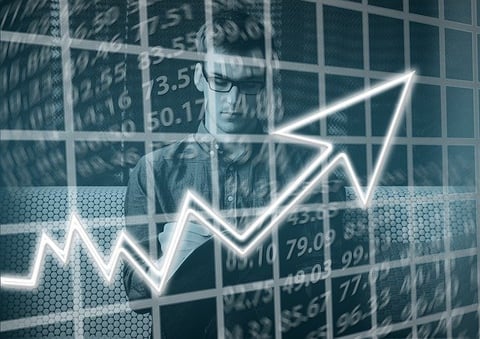This is part of a series of interviews with B2B revenue leaders. This interview is with Matt Heinz, President of Heinz Marketing.

Who are you and what do you do?
My name is Matt Heinz and I'm the president of Heinz Marketing.
Heinz Marketing is a B2B sales and marketing consulting firm. People think of us as sales pipeline people. We're a bunch of marketers that think in terms of sales pipeline growth and conversion. We focus on demand generation, lead management, and sales enablement services.
Looking at your job path, you've been in a number of roles including PR, reporter, sales, product management, and director of marketing. How has that path led you to where you are today?
The short answer is that it's been a giant mistake.
You can look at a lot of people in marketing and even sometimes in sales, and they didn't necessarily intend to get into what they're doing today.
For me, I appreciate having the journalism background. It’s helped refine my ability to be a good writer, a storyteller, and to always be thinking about the reader. That translates well into working the sales and marketing pipeline as we far too often talk about ourselves and don't focus nearly enough on the benefits to customers.
Today we're going to be covering a few topics surrounding full-funnel marketing. Things like team structure, alignment, and measurement... but I'd like to start by getting your thoughts on where marketing ends and sales begin, and how that can affect a company's tech stack?
I'm a strong believer that marketing's job ends at the same time that sales jobs ends. It's all about revenue events and getting the deal.
In terms modern marketing, the best companies are looking at marketing not just to generate leads and air cover, but really to focus on pipeline contribution and marketing's influence on closed business. It's important for marketing to have a full-funnel view.
You could argue that sales begins when they've got a warm lead, but I see a lot of sales organizations that are beginning the relationship well before then. They're building early stage relationships and trust.
Gone are the days when there were distinct phases of sales and marketing. The more that those organizations treat business as a partnership and a collaboration, the more successful they'll be.
For companies that are measuring marketing on vanity metrics like clicks, leads, and likes, making a change to be measured on revenue pipeline metrics is massive. What kind of steps would you recommend taking when making that change?
First, think about how you can migrate away from reporting on activity and focus on results. Click and open rates are great leading indicators of how well your campaigns are performing, but you've got to think about what metrics your organization really cares about.
For example, we've got a client that has always been reporting on overall lead volume and so now we've got them at the point now where the most important metric that marketing owns is opportunities created. It's an agreed upon definition between sales and marketing, and there's an agreed number of those opportunities that need to be created. So they no longer care about lead volume and are happy to generate fewer leads as long as more of those leads convert into opportunities.
If you're an organization that has been trained to view marketing as an activity driver... this will not be an overnight change. You may not necessarily be able to change the reporting right away, but there's a difference between reporting and intent. Marketers that begin to have the intent to focus on revenue producing events and to focus on pipeline contribution will be very successful.
Technology has had such a tremendous impact on that, right? A decade ago it would be nearly impossible to measure marketing on revenue metrics but with the number of tools available in the B2B space, there's no excuse not to.
Well, there isn't, but some of those tools are out-of-reach for some companies, they're not inexpensive. They are not simple to use either, and they are not perfect.
Even though we have better attribution tracking today doesn't mean that everybody is able to tell every click, every touchpoint, every interaction, and the impact each activity has on velocity and deal conversion.
This is where intent becomes important once again. If you're speaking the language of sales contribution and using the same metrics that sales cares about, that immediately gives you trust inside the organization. You're no longer just the arts and crafts department that is printing new business cards and putting together trade show booths. You’re an integral part of the profit center of the business. Tracking is a key component of that, but tracking tends to be a lagging indicator of companies that actually embrace revenue responsibility to begin with.
How does technology change the way teams communicate internally?
It's certainly makes collaboration easier, but it hasn't necessarily changed whether sales and marketing are telling the same story.
Honestly, technology can actually be a deterrent to being successful. In a lot of companies, technology is the tail that's leading the dog. It becomes counterproductive because they're not focused on the right technology and they don't fully integrate across all of the their tools.
You’ve talked in the past about sales operations and enablement teams being very impactful within sales especially when it comes to alignment. Why are these roles so crucial?
Yeah, those teams have the ability to increase the productivity of sales reps across your entire organization.
They're teams that have the ability to improve your tech stack so your sales team is spending less time in CRM and more time actively selling. They can give your team the content they need, at the right time. Not only will your team spend less time creating and looking for content, but the content they share with prospects is more impactful.
Well executed sales and marketing operations teams can be measured directly on this productivity of the sales team like the active selling time and the conversion rates of opportunities to close.
I don't know of any other department or function that can have that big of an impact on the organization. Traditionally sales administration intended to be a reactive administrative role, but today, it's very proactive. It's strategic and it's being managed by more senior people that have a strategy and budgets.
What's your thoughts on having sales enablement live under marketing?
I love it.
The more that marketing can be responsible, not only for metrics deeper into the sales pipeline but also the resources that do that, the better aligned sales and marketing will be.
I've seen many marketing organizations own lead qualification. Instead of sitting those leads to be qualified by sales, marketing takes them and qualifies them themselves and so the send over an SQL rather than an MQL. The more marketing can manage metrics deeper into the funnel, the more that forces a level of revenue responsibility and drives alignment that is more than healthy.
The whole topic of alignment is a tricky one. A big barrier is the fact that marketing lives primarily within automation and sales lives with their CRM, so they're looking at the same information but through different lenses which make it tough to stay on the same page. What are your thoughts on that?
I have no problem with teams using different systems, those systems just need to talk to each other.
It's really important that marketing and sales work on a foundation of common objectives, common definitions, and from the same set of math. Figure out how many deals you need to close, how big of a pipeline you need to close those deals, and how many leads you need to feed into that pipeline. That needs to be a set of math that both sales and marketing agree on.
Too often, there isn't a connection between the tools that sales and marketing are using. You've got marketing that owns a lead goal that has nothing to do with whatever the sales pipeline goal is. Marketing is generating what they think are leads but the sales team has a completely different definition of what a lead is. Even if you're using the same system, if you don't have those defined objectives and definition, it's just not going to work.
That relates very well to a chart by DemandMetric that you referenced in one of your presentations that indicates the relationship between reaching sales goals and the alignment of the sales and marketing teams.

What is the biggest or most common tech stack gap that you see with the companies you deal with?
What you need in your tech stack is unique to your organization. There tend to be some pillars… the tools that almost every organization needs. CRM is one and marketing automation is another. Two others I would add to that would be an attribution tool set as well as some sort of predictive technology. Those two are becoming more table stakes.
The tools you need beyond that and how you balance them is unique to your business and to where you see gaps and bottlenecks in execution. Where are the things that you're doing manually that should be automated and scalable? Those are the places you should go.
Even within CRM and marketing automation, different companies with different go-to-market strategies may have different needs. We have a client right now that is focused on 148 accounts and that is their entire focus. The way they go-to-market and the way they use their technology is going to be completely different than a company that has a market of 400,000 prospects.
ABM is has been one of those things that is coming up so often in the past year or two...
Most companies have been doing it for a while already, and most companies sales teams have been doing it forever.
To me, the real output in maturity in ABM will be when most organizations start having more of an account orientation to their sales and marketing efforts. Most companies, even those that say they are doing ABM, still market to individuals. They still market to certain individual people within companies we're targeting, as opposed to thinking about them as a single ecosystem. These are people that work together and have shared objectives.
You're having conversations with individuals, but the deal you want is with the account. So how do you balance those two things? Having conversations across sales and marketing and across multiple people, but in a coordinated integrated fashion that focuses on effectively closing the account. That's the real definition of what true ABM is.
What are a few of your favorite resources that you'd recommend?
I highly recommend the Marketo and Hubspot blogs if you're in marketing, they're both great. I follow Craig Rosenberg, the Funnelholic, and everything he's producing.
For modern marketers, more important than ever, follow the great sales bloggers. As marketers, we usually gravitate towards content that we know and understand, but I'd encourage marketers to focus on content that they don't understand which is usually on the sales side. Some of the best sales blogs out there would be:
- David Brock — Partners in Excellence
- Anthony Iannarino — The Sales Blog
- Jill Konrath — Jill Konrath's Fresh Sales Strategies
- Tom Searcy — Hunt Big Sales
- Trish Bertuzzi — Inside Sales Experts Blog
- Lori Richardson — Score More Sales
- Jim Keenan — A Sales Guy
It's nice to see that you took the modest route not mentioning the Heinz Marketing blog... it's one that I check out regularly. What can people expect from your blog?
Our blog covers the gamut on the sales and marketing side. We tend to write mostly about B2B marketing, but as you've heard in many of my answers, we think about the entire funnel. We really try to cover both sides but also make it very practical. We do our best to provide advice that people can take action on. We publish every day and have a great variety of content throughout the week.



